Tropic acid
Modify Date: 2025-08-19 19:00:50

Tropic acid structure
|
Common Name | Tropic acid | ||
|---|---|---|---|---|
| CAS Number | 529-64-6 | Molecular Weight | 166.174 | |
| Density | 1.3±0.1 g/cm3 | Boiling Point | 322.5±30.0 °C at 760 mmHg | |
| Molecular Formula | C9H10O3 | Melting Point | 116-118 °C(lit.) | |
| MSDS | N/A | Flash Point | 163.1±21.1 °C | |
| Name | tropate |
|---|---|
| Synonym | More Synonyms |
| Density | 1.3±0.1 g/cm3 |
|---|---|
| Boiling Point | 322.5±30.0 °C at 760 mmHg |
| Melting Point | 116-118 °C(lit.) |
| Molecular Formula | C9H10O3 |
| Molecular Weight | 166.174 |
| Flash Point | 163.1±21.1 °C |
| Exact Mass | 166.062988 |
| PSA | 57.53000 |
| LogP | 0.28 |
| Vapour Pressure | 0.0±0.7 mmHg at 25°C |
| Index of Refraction | 1.576 |
| Water Solubility | 20 g/L (20 ºC) |
Synonym: Section 2 - COMPOSITION, INFORMATION ON INGREDIENTS
Risk Phrases: None Listed. Section 3 - HAZARDS IDENTIFICATION EMERGENCY OVERVIEW
The toxicological properties of this material have not been fully investigated. Potential Health Effects Eye: May cause eye irritation. The toxicological properties of this material have not been fully investigated. Skin: May cause skin irritation. The toxicological properties of this material have not been fully investigated. Ingestion: May cause gastrointestinal irritation with nausea, vomiting and diarrhea. The toxicological properties of this substance have not been fully investigated. Inhalation: May cause respiratory tract irritation. The toxicological properties of this substance have not been fully investigated. Chronic: No information found. Section 4 - FIRST AID MEASURES Eyes: Flush eyes with plenty of water for at least 15 minutes, occasionally lifting the upper and lower eyelids. Get medical aid immediately. Skin: Get medical aid. Flush skin with plenty of water for at least 15 minutes while removing contaminated clothing and shoes. Wash clothing before reuse. Ingestion: If victim is conscious and alert, give 2-4 cupfuls of milk or water. Never give anything by mouth to an unconscious person. Get medical aid immediately. Inhalation: Remove from exposure and move to fresh air immediately. If not breathing, give artificial respiration. If breathing is difficult, give oxygen. Get medical aid. Notes to Physician: Section 5 - FIRE FIGHTING MEASURES General Information: As in any fire, wear a self-contained breathing apparatus in pressure-demand, MSHA/NIOSH (approved or equivalent), and full protective gear. During a fire, irritating and highly toxic gases may be generated by thermal decomposition or combustion. Extinguishing Media: Use agent most appropriate to extinguish fire. Use water spray, dry chemical, carbon dioxide, or appropriate foam. Section 6 - ACCIDENTAL RELEASE MEASURES General Information: Use proper personal protective equipment as indicated in Section 8. Spills/Leaks: Clean up spills immediately, observing precautions in the Protective Equipment section. Sweep up or absorb material, then place into a suitable clean, dry, closed container for disposal. Provide ventilation. Section 7 - HANDLING and STORAGE Handling: Wash thoroughly after handling. Remove contaminated clothing and wash before reuse. Use only in a well-ventilated area. Avoid contact with eyes, skin, and clothing. Keep container tightly closed. Avoid ingestion and inhalation. Storage: Keep container closed when not in use. Store in a cool, dry, well-ventilated area away from incompatible substances. Section 8 - EXPOSURE CONTROLS, PERSONAL PROTECTION Engineering Controls: Use adequate ventilation to keep airborne concentrations low. Exposure Limits CAS# 529-64-6: Personal Protective Equipment Eyes: Wear appropriate protective eyeglasses or chemical safety goggles as described by OSHA's eye and face protection regulations in 29 CFR 1910.133 or European Standard EN166. Skin: Wear appropriate protective gloves to prevent skin exposure. Clothing: Wear appropriate protective clothing to prevent skin exposure. Respirators: Follow the OSHA respirator regulations found in 29 CFR 1910.134 or European Standard EN 149. Use a NIOSH/MSHA or European Standard EN 149 approved respirator if exposure limits are exceeded or if irritation or other symptoms are experienced. Section 9 - PHYSICAL AND CHEMICAL PROPERTIES Physical State: Powder Color: white Odor: None reported. pH: Not available. Vapor Pressure: Not available. Viscosity: Not available. Boiling Point: Not available. Freezing/Melting Point: 117.00 - 120.00 deg C Autoignition Temperature: Not available. Flash Point: Not available. Explosion Limits, lower: Not available. Explosion Limits, upper: Not available. Decomposition Temperature: >160 deg C Solubility in water: 20 g/l (20 c) Specific Gravity/Density: Molecular Formula: C9H10O3 Molecular Weight: 166.18 Section 10 - STABILITY AND REACTIVITY Chemical Stability: Stable under normal temperatures and pressures. Conditions to Avoid: Incompatible materials. Incompatibilities with Other Materials: Oxidizing agents. Hazardous Decomposition Products: Carbon monoxide, carbon dioxide. Hazardous Polymerization: Has not been reported. Section 11 - TOXICOLOGICAL INFORMATION RTECS#: CAS# 529-64-6 unlisted. LD50/LC50: Not available. Carcinogenicity: DL-Tropic Acid - Not listed by ACGIH, IARC, or NTP. Section 12 - ECOLOGICAL INFORMATION Section 13 - DISPOSAL CONSIDERATIONS Dispose of in a manner consistent with federal, state, and local regulations. Section 14 - TRANSPORT INFORMATION IATA Not regulated as a hazardous material. IMO Not regulated as a hazardous material. RID/ADR Not regulated as a hazardous material. Section 15 - REGULATORY INFORMATION European/International Regulations European Labeling in Accordance with EC Directives Hazard Symbols: Not available. Risk Phrases: Safety Phrases: S 24/25 Avoid contact with skin and eyes. S 28A After contact with skin, wash immediately with plenty of water. S 37 Wear suitable gloves. S 45 In case of accident or if you feel unwell, seek medical advice immediately (show the label where possible). WGK (Water Danger/Protection) CAS# 529-64-6: No information available. Canada None of the chemicals in this product are listed on the DSL/NDSL list. CAS# 529-64-6 is not listed on Canada's Ingredient Disclosure List. US FEDERAL TSCA CAS# 529-64-6 is not listed on the TSCA inventory. It is for research and development use only. SECTION 16 - ADDITIONAL INFORMATION N/A |
| Hazard Codes | Xi |
|---|---|
| Risk Phrases | 22-41-37/38-36/37/38 |
| Safety Phrases | S22-S24/25 |
| WGK Germany | 3 |
| HS Code | 2918990090 |
| Precursor 9 | |
|---|---|
| DownStream 10 | |
| HS Code | 2918990090 |
|---|---|
| Summary | 2918990090. other carboxylic acids with additional oxygen function and their anhydrides, halides, peroxides and peroxyacids; their halogenated, sulphonated, nitrated or nitrosated derivatives. VAT:17.0%. Tax rebate rate:13.0%. . MFN tariff:6.5%. General tariff:30.0% |
| 2-Phenylhydracrylic acid |
| Tropaicacid |
| DL-Tropicacid |
| Tropicamide impurity C |
| TROPIC ACID,DL |
| a-(Hydroxymethyl)benzeneacetic Acid |
| Tropic |
| DL-Tropic acid 5GR |
| 2-Phenylhydracrylic acid,3-Hydroxy-2-phenylpropionic acid |
| 3-hydroxy 2-phenyl propanoic acid |
| 3-hydroxy-2-phenyl-propionic acid |
| Benzeneacetic acid, α- (hydroxymethyl)- |
| 2-phenyl-3-hydroxypropanoic acid |
| 2-phenyl-3-hydroxy-propionic acid |
| 3-Hydroxy-2-phenylpropionic acid |
| a-Phenyl-b-hydroxypropionic Acid |
| Benzeneacetic acid, α-(hydroxymethyl)- |
| DL-Tropic acid |
| Tropic acid |
| EINECS 208-465-3 |
| Tropeic Acid |
| (±)-tropic acid |
| Tropaic Acid |
| MFCD00004255 |
| Ipratropium Bromide Impurity 3 |
 CAS#:15231-78-4
CAS#:15231-78-4 CAS#:1570-95-2
CAS#:1570-95-2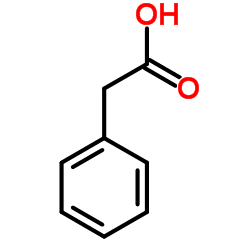 CAS#:103-82-2
CAS#:103-82-2 CAS#:50-00-0
CAS#:50-00-0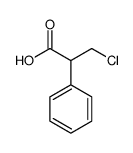 CAS#:51545-26-7
CAS#:51545-26-7 CAS#:1068-55-9
CAS#:1068-55-9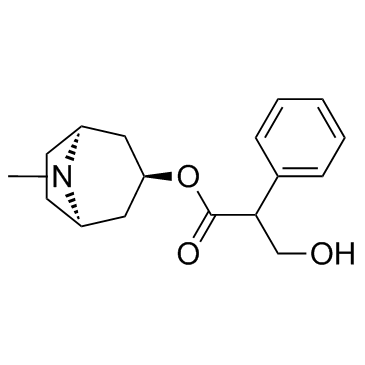 CAS#:51-55-8
CAS#:51-55-8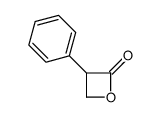 CAS#:27150-91-0
CAS#:27150-91-0 CAS#:51-34-3
CAS#:51-34-3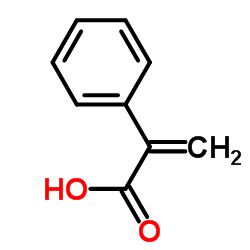 CAS#:492-38-6
CAS#:492-38-6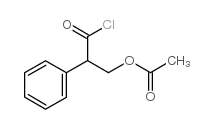 CAS#:14510-37-3
CAS#:14510-37-3 CAS#:1865-29-8
CAS#:1865-29-8 CAS#:1528-39-8
CAS#:1528-39-8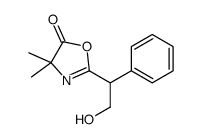 CAS#:918159-31-6
CAS#:918159-31-6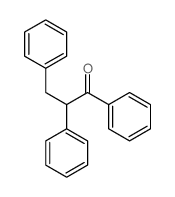 CAS#:4842-45-9
CAS#:4842-45-9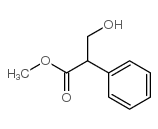 CAS#:3967-53-1
CAS#:3967-53-1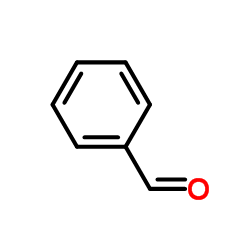 CAS#:100-52-7
CAS#:100-52-7
